In the extreme northeastern portion of continental North America lies an isolated and rugged wilderness called Labrador. Its southern portions are dissected by one of the remotest roads in the world: the Trans-Labrador Highway. The highway runs for 714 miles along strikingly rugged coastlines and through Labrador’s pristine interior. There are few rest stops along the way, little traffic, and although the majority of it is now paved, traversing the remote roadway remains one of North America’s most genuine and challenging vehicle-supported adventures.
To make things even more interesting, the Trans-Labrador Highway can only be reached via the notorious, 352-mile long Québec Highway 389, which is the only road into Labrador. It begins near the town of Baie Comeau, Québec and works its way north, winding through mountainous terrain with long, unpaved sections. It skirts the massive Lac Manicouagan before it turns into the Trans-Labrador Highway as it crosses the southwest portion of the Labrador border.
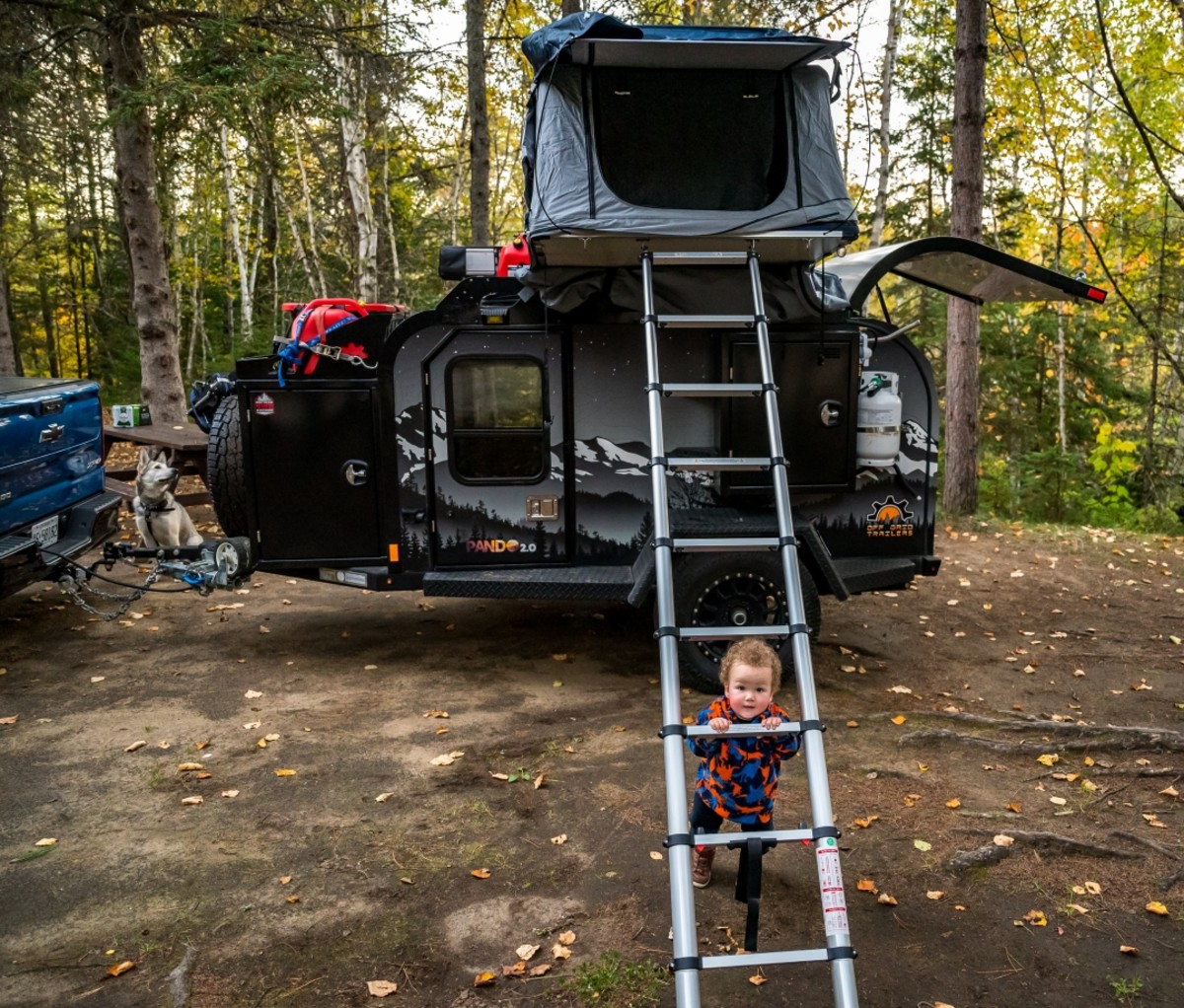
My wife Tori and I tackled the highway head on in October of 2022 with our two young kids (aged 14 months and four years old) along with our one-year-old Husky puppy. For our six-day trip along the route, we traveled with a full overlanding setup: a full-size, off-road capable Chevy Silverado ZR2 pickup paired with an off-road teardrop trailer. Overlanding is vehicle-supported, self-reliant adventure travel that typically explores remote locations; the journey itself is the primary goal of the trip. Our Trans-Labrador adventure fits that description quite nicely.
En route, we’d also visit some of the unique fishing villages where the highway meets the coast. A distinct brogue is spoken in these communities and people come from a mix of European, Inuit, and other Indigenous backgrounds. A different way of life exists here, and the road has only reached most of these communities within the past decade, leaving them less altered by outside influence. Their history includes that of 16th century Basque whalers, heroic Inuit migrations of long ago, Vikings, 15th century explorers, and more. It’s fascinating. And what’s even more exciting is that modern-day travelers can rediscover tangible evidence of these bygone eras along the way.
We’d been itching to get out on another adventure of this nature since my family headed up the Alaska Highway in the winter of 2021. That route is hard to beat, but I knew the Trans-Labrador Highway would compare and even outdo it in some ways. We also learned from the past adventure that we’d need more time to really get the most out of a trip like this. Despite the fact that October can get pretty chilly in northern Canada, we were excited to be able to spend more time outdoors as a family than we did on the Alaska Highway in February.
Here are a few things to keep in mind if you’re thinking about embarking on an overlanding trip on the Trans-Labrador Highway yourself.
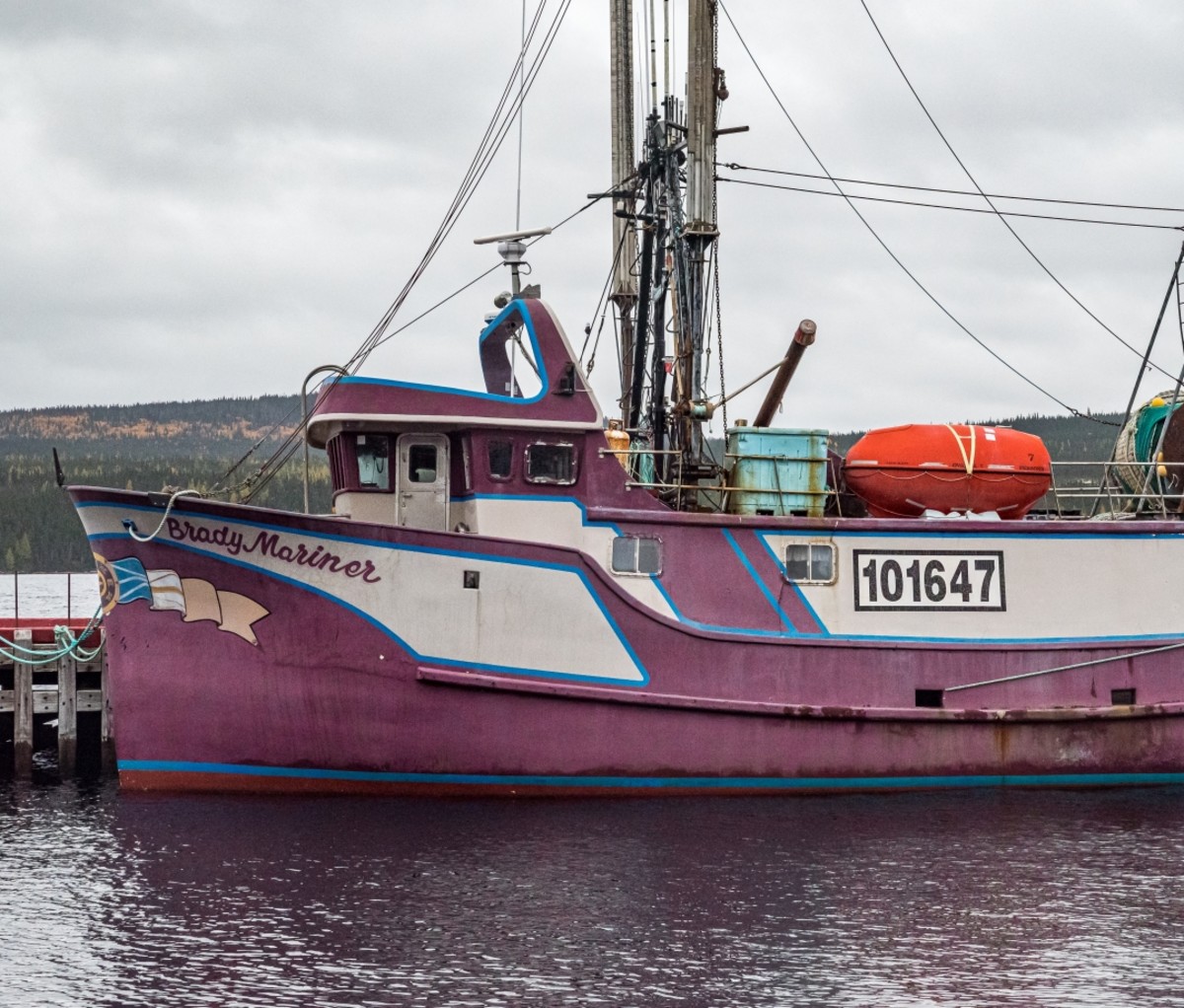
What to Expect
Weather: Conditions can get brutal in the winter along the Trans-Labrador Highway. Snow accumulation of up to 12 feet is not uncommon. Needless to say, this is a trip best reserved for spring, summer, or fall. Note that summer months typically see more tourism and therefore more seasonal services are available to the traveler. For fall or spring trips, bring lots of warm clothes and be prepared to wait out bad weather, which can include snow squalls.
Sketchy Stretches of Road: Respect for the road is mandatory. For example, a particularly accident-prone area is a stretch of Québec Highway 389 that starts at kilometer 495 and runs to the provincial border at kilometer 567—it’s full of sharp bends and poor surfaces. The local joke is that the bends are so tight, you can see your own tail lights.
No Gas Stations: Always drive with jerry cans filled with extra gas, particularly if you’re hauling a trailer. Two 6.6-gallon (25-liter) jerry cans should do the trick. There’s a good chance you’ll need to use these at least once on the route as there are no gas stations, food, or accommodations in the 553-mile-long section of highway between Happy Valley-Goose Bay and Port Hope Simpson.
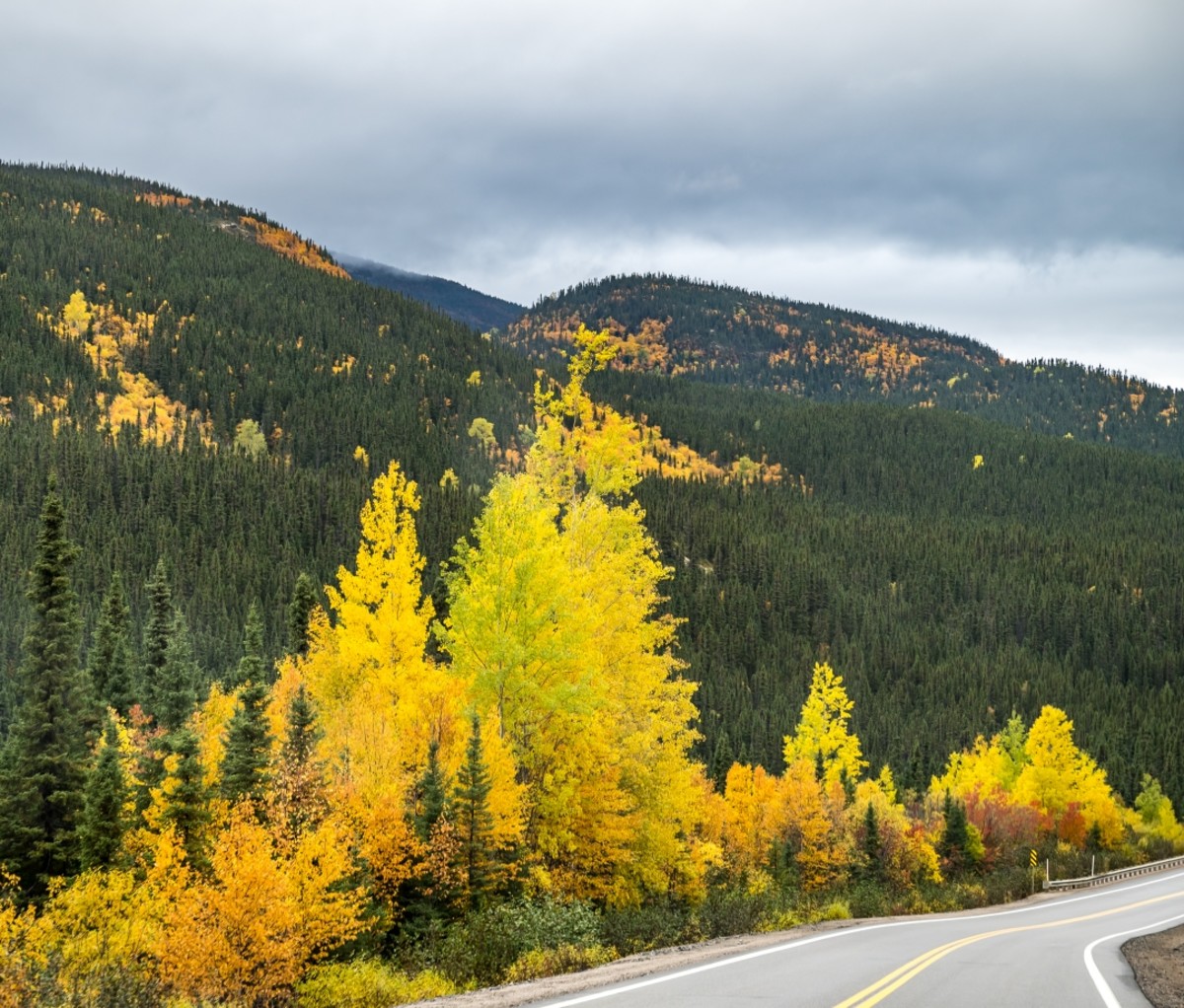
What to See
The Trans-Labrador Highway serves up no shortage of natural wonders. Along the way, you can spot wildlife such as moose and caribou, glimpse the northern lights and brightly starlit skies, and wander through countless expansive river valleys. In addition, there are some specific points of interest that you’ll want to take in along the way to really round out your experience.
Lake Manicouagan: This large lake is the remnant of an impact crater created by an asteroid millions of years ago (and the lake was made even larger by the construction of a hydroelectric dam in the 1960s). It lies off of Québec Hwy 389. Access to the lake is possible at Station Uapishka, which is 209 miles north of Baie Comeau. You won’t forget the sight of the huge power dam, Manic 5, you’ll pass on route; the steep climb that comes right after it is memorable as well.
You can set up camp right on the shore of beautiful Lake Manicouagan, where you’ll be surrounded by the breathtaking Uapishka (Groulx) Mountains. This is the best place to camp on the route before reaching the Trans-Labrador Highway proper, and it’s also a great spot to spend an extra day or more. Consider taking a day off here to paddle and fish the lake, or even head off on a multi-day backpacking trek to explore the surrounding mountain wilderness.
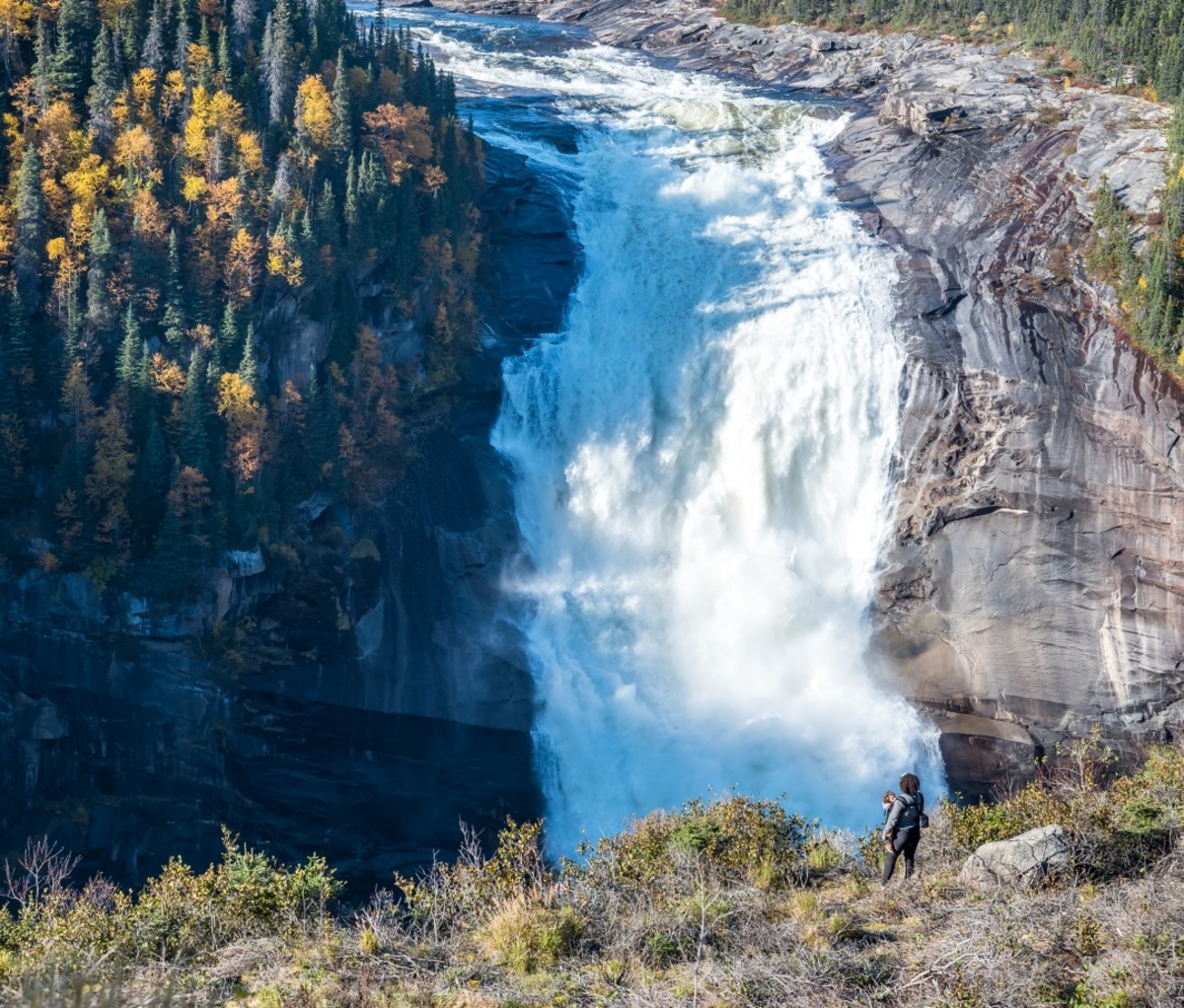
Churchill Falls: Though still an impressive sight, large-scale hydroelectric development in the late sixties and early seventies restricted the flow of the once mighty Churchill Falls. On a high water year (like when we were there), it can still be seen in its near-original glory.
Camp at the trailhead 10 miles west of the community of Churchill Falls and hike the 2.2-mile trail for best views of the falls and canyon. Churchill Falls marks the Height-of-Land portage where, in the 1930s, long before the construction of roads and hydro plants, hardy trappers would carry their canoes along with a winter’s supply of provisions up the steep gradient to eventually reach their trapping grounds. The journey took them three weeks of upriver travel from the community of North West River at Lake Melville.
Tours of the Churchill Falls Generating Station are also available in the community. Churchill Falls is the second-largest hydroelectric plant in Canada, with nearly 5,500 megawatts of capacity. A notable feature of the generating station is that its primary machine hall is 1,000 feet underground, carved deep into solid bedrock.
Icebergs and More: Icebergs can be seen from spring to early summer along the coastal portions of the highway. We missed them by a long shot on our October adventure, but in season, they can best be seen from shore in St. Lewis. The quintessential Labradorian fishing village can be reached off the Trans-Labrador Highway by traversing the 20-plus-mile-long Route 513. The all-gravel route offers a beautiful side adventure in and of itself, with views that embody the stark beauty of Labrador’s coastal region.
At 513’s terminus, you’ll be the furthest east you can possibly get by road in mainland North America. Pro tip: Don’t forget to pick up some delicious snow crab legs if you’re in town in season, which typically ends in mid-July (we missed this too, ho-hum). You can dramatically increase your chances of seeing icebergs by taking an iceberg boat tour out of Mary’s Harbour (population 312). Additionally, boat tours of Battle Harbour are available out of Mary’s Harbour. Battle Harbour is an abandoned island fishing community that was a permanent settlement from the 1770s to about 1930.
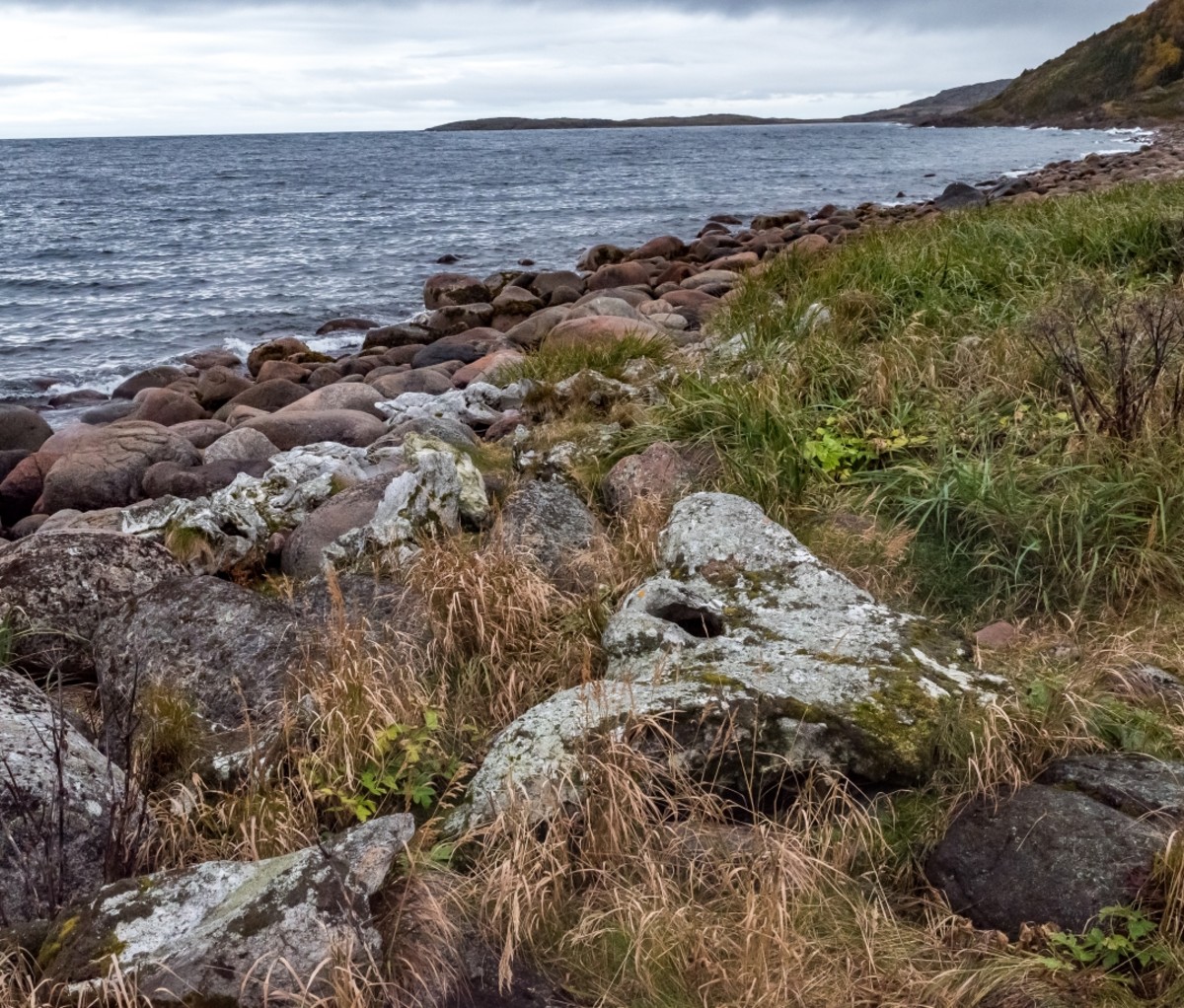
Boney Shore Trail: Near Red Bay, a moderate, 1.3-mile round trip hike will lead you past a stretch of coast where many right and bowhead whales were processed by Basque whalers between 400 and 500 years ago. Today, with a little effort, you’ll find hundreds of the old, weather-worn bones of these whales strewn all over the beach and nestled into the coastal vegetation.
The remains of other structures, including stone rendering ovens that were used to turn whale blubber into oil, can be seen in the immediate area, too. The site is so significant that it’s both a UNESCO World Heritage Site and a National Historic Site. In addition, the spot is inspiring in general. Powerful waves crash onto the beach of smooth boulders at the Boney Shore, while views of the Labrador Sea and the mountainous, wind-swept Saddle Island are spectacular.

Some Essential Gear You’ll Need
Communication and Navigation: While there is cell reception within the communities along the Trans-Labrador Highway, the vast majority of the route has none and stretches can see few other vehicles. Because of this, it can be very challenging to get help without some form of satellite communication. Combat this danger by bringing an inReach satellite texting device that also has a GPS navigator built into it. (Your smartphone has built-in GPS capability, but it won’t calculate a route and share travel data in its navigator apps without reception.)
For backup and to give you a broader perspective of your route, bring a paper map as well. Naturally, a satellite phone is another great option and the provincial government offers a sat phone loaner system for travelers on the Trans-Labrador. The phones are available for pickup at places of lodging along the route. Note that non-residents will need to provide a valid credit card number to borrow a sat phone.
Prepare for Bugs: Particularly in the spring and earlier in the summer, mosquitos and black flies can be bad. Fight back by using insect repellant with a high DEET content, such as Muskol. You can purchase it (along with any other last-minute automotive items and camping gear) at Canadian Tire stores on the way to Baie Comeau. If you’re heading into bug season, also bring a bug jacket and consider bringing a bug shelter along as well. A bug shelter is essentially a tarp that comes with mosquito netting walls and is set up using poles and guylines.
Consider Your Vehicle: A four-wheel-drive or all-wheel-drive vehicle is the best choice, particularly if you want to venture off the road onto side trails where you may find mud and other obstructions. In addition, you’ll need a vehicle with enough power and space to hold your gear and haul a trailer if you’re bringing one. SUVs and pickup trucks are great options as they offer more clearance and beefier suspension than crossovers. Traveling with the whole family on a month-long trip, we were happy to have a full-size pickup.
That said, if you’re going to stay on the main road and are traveling during the summer months, you will be OK with 2WD vans or sedans with quality tires. No matter what you choose to drive, reliability is paramount since services are few and far between.
Trailer: Particularly if you’re traveling as a family or embarking on a longer trip, hauling a trailer could be your best bet. A compact, rugged trailer that can take some off-road abuse will expand your possibilities and ultimately keep you safer. Smaller trailers will make it easierto turn around in tighter spaces, allowing you to explore more. They’ll be more fuel efficient to haul than large ones. The off-road teardrop trailer we hauled is called the Pando 2.0 and is made by Off-Grid Trailers. It has a whopping 21 inches of ground clearance and independent suspension, which gives it off-road capability beyond what’s needed for your standard Trans-Labrador Highway adventure.
The trailer’s indoor sleeping space measures 56 5/8 inches wide by 80 inches long (just shy of a queen-sized bed) with 46 1/8 inches of headroom. The interior comes with plenty of cubbies for storage and an efficient propane heater for warmth. (Trailer AC options are also available). The blower and thermostat for the heater are battery operated, and the trailer’s batteries trickle charge from the truck while on the move through the trailer’s seven-pin connector. The batteries also run the trailer’s fridge and freezer. (We brought a small gas generator and extension cord along that we used to charge the trailer’s batteries on days we didn’t travel).
To maximize the trailer’s versatility, additional amenities are accessible from the outside. For example, the tailgate opens up to reveal a kitchen with plenty of storage cubbies as well as a sink, fridge, and double-burner propane cook stove. A water tank mounted under the trailer is protected by a skid plate and hot water on demand is provided by the propane water heater. The trailer is also equipped with a shower nozzle and a zip-away shower curtain mounted to the trailer’s roof rack provides privacy. With little room indoors other than for sleeping, this type of trailer really maximizes outdoor time and offers a balance between trailer camping and tent camping.
Awning: On rainy days, a side awning mounted to your vehicle’s or trailer’s roof rack can fold out to offer a large area of protection, so you can sit fireside and have access to your trailer or vehicle without getting wet. If heavy rain is mixed with strong wind, walls can be zipped onto the canopy to block rain coming in from the side. The retractable tarp folds up and is easily zipped away when you’re ready to travel again. We had one of these mounted to our trailer and used the side walls once on our trip when the weather became particularly miserable.
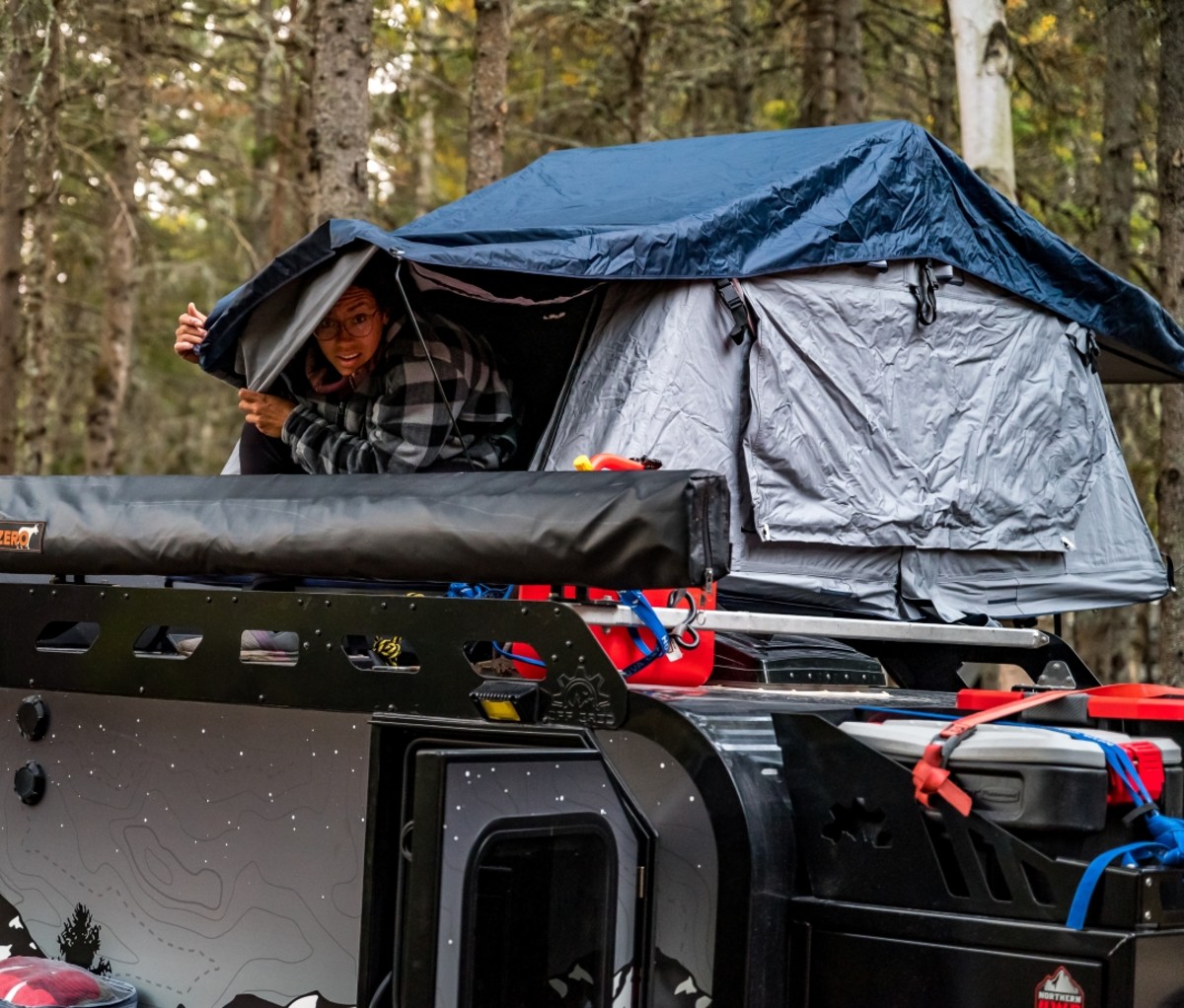
Tents: A teardrop trailer is a little tight for the whole family to sleep in, so we installed a rooftop tent on the trailer for this adventure. Rooftop tents remain fixed to your roof and zip into a weather-resistance cover while not in use. They set up quickly, have a built-in, comfy sleeping pad, and are accessed by a telescopic ladder (fun!). These tents are very sturdy, dry, and can be mounted onto the roofs of many different types of vehicles, including on top of a bed rack installed on a pick-up.
Of course, a good old fashioned tent that you set up on the ground will work, too. Choose one with a sturdy fly that comes right down to the ground and has adequate mosquito netting, such as the MSR Hubba Hubba 2, or go with a bigger tent—unless you’re doing overnight hiking along the way, you don’t need to be overly concerned about weight. If you plan on setting up a tent on the ground, don’t forget to bring a ground pad as well.
Sleeping Bag: It’s a good ideal to bring a three-, or even four-season sleeping bag because summer nights can get chilly in Labrador (the average July low is 49 degrees Fahrenheit in Churchill Falls). Even with a heated trailer, it’s good to have a warm sleeping bag in case you run out of propane or your heater stops working. For sleeping in the rooftop tent in October, I used a -40 down mountaineering bag to be safe, though it proved to be a little overkill.
Portable Power: Most overlanding and RV enthusiasts nowadays carry a 600W or higher battery-powered portable power station. We use the Bluetti EB3A for trips like this. Unlike gas generators, portable power stations operate in silence, are lightweight, and can be charged with a solar panel (or through any AC or DC jack). We bring a solar panel but often find charging it through our vehicle while driving to be sufficient.
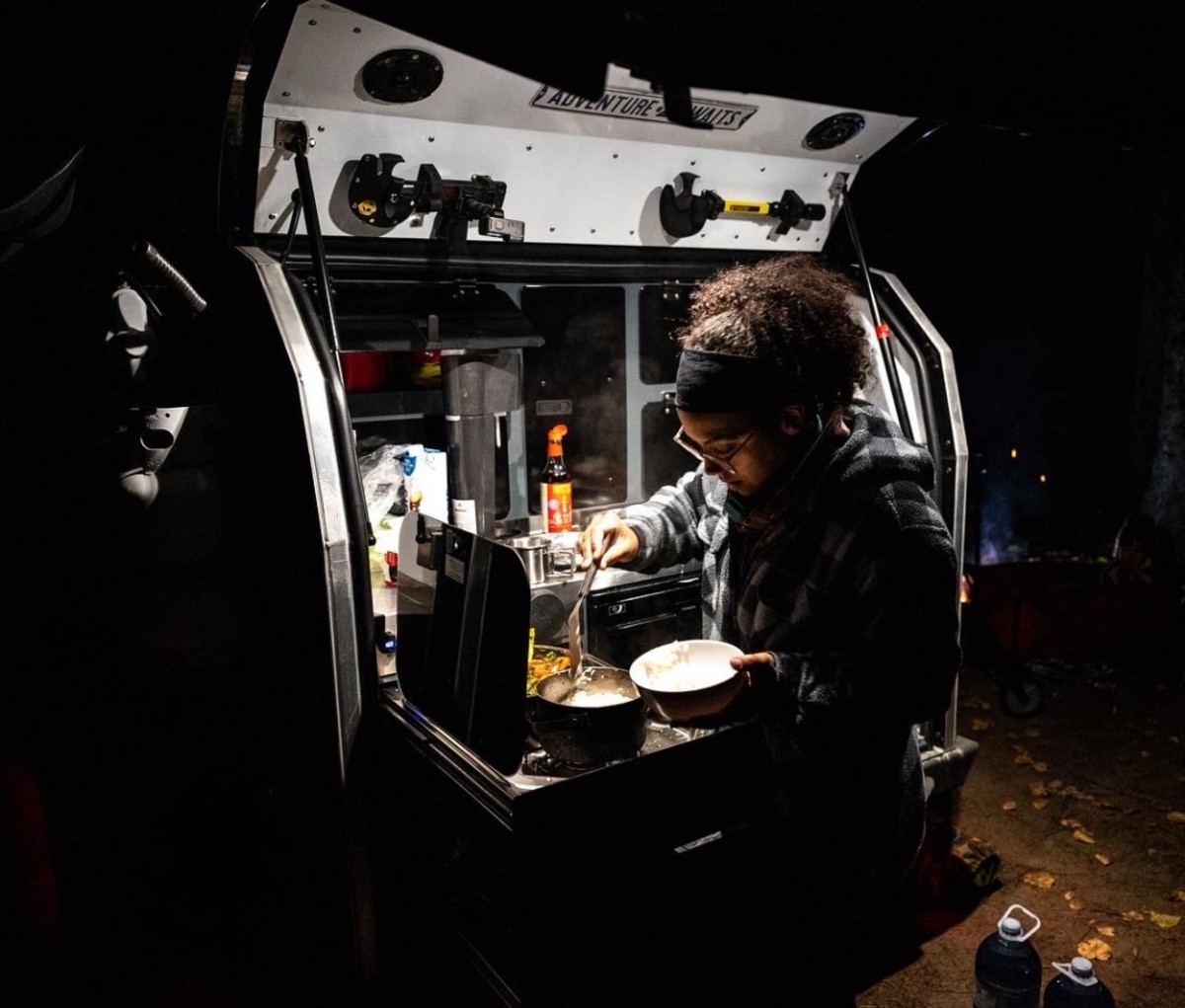
Skills to Master Before You Depart
Repair a Flat: It’s a good idea to know how to find a hole in a punctured tire using soap and water and how to repair it with a tire plug kit.
Basic Wilderness Camping Skills: Camping skills will come in handy on this trip. For example, knowing how to process firewood and get a fire going, even when it’s wet out, will increase your enjoyment out there, particularly on colder evenings.
First Aid: When in remote locations, the best motto to go by is plan for the worst and hope for the best. Bringing a robust first-aid kit is a great idea, but if you don’t know how to use it, it’s not going to be very effective. Before heading out, spend some time learning how to treat common outdoor injuries such as deep cuts, eye injuries, burns, and sprains. Taking CPR and Wilderness First Aid courses is the fastest way to learn these things.
Basic Vehicle Troubleshooting: Let’s not overlook the basics. Before heading for the Trans-Labrador Highway, make sure you know how to change a tire, check your vehicle’s oil and fluid levels, jumpstart a vehicle, and property hook up and detach a trailer if you’re hauling one.
Change a Tire With a Utility Jack: Because a utility or high-lift jack is too tall to fit under your vehicle, you need to place it under the outside of the vehicle at the bumper or under one of your rock sliders (as opposed to putting it under the axle like with a standard jack). The issue with this is that, in order to get the wheel off the ground, you’ll have to jack the vehicle up quite high to allow the suspension to stretch out enough for the wheel to lift off the ground. Instead of doing this, it’s a lot safer and easier to first use a heavy-duty ratchet strap to secure the axle housing to the frame rail of your vehicle so that the frame and suspension will move as one as you jack it up. These kinds of jacks can be dangerous, so make sure you follow the instructions and learn to use them properly before heading out on a trip. Don’t forget to bring a 2×6 wooden block as a sturdy base for the jack.
Bear Safety: Bear encounters are rare, but the Trans-Labrador Highway is definitely in bear country. The main concern is black bears here (there are no grizzlies), but the odd polar bear may be seen on the coast (typically only during the winter). Keep safe in bear country by not leaving food and food packaging laying around. Keep it in your vehicle or trailer and dispose of any smelly garbage or rotting food.
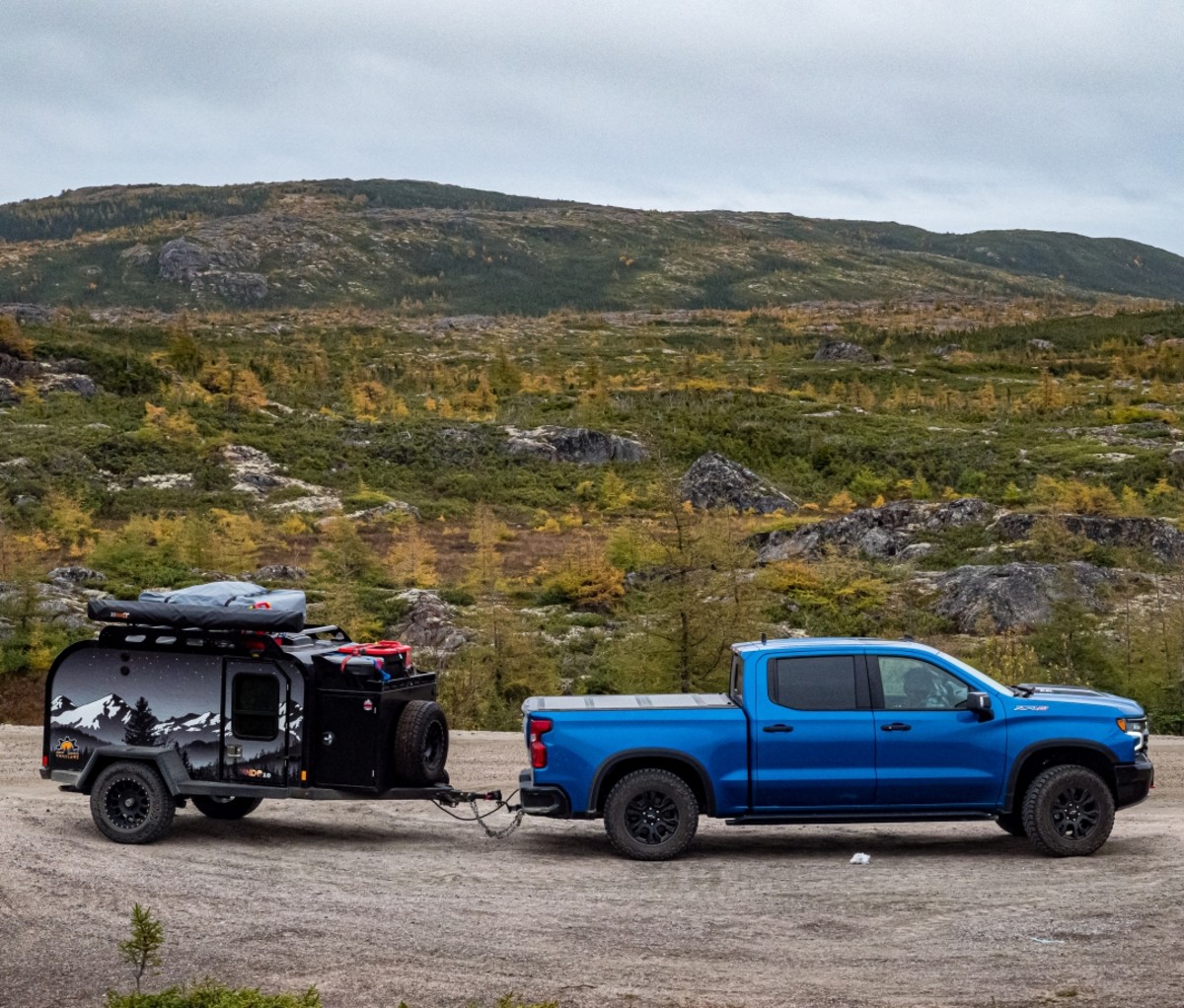
Off-Roading Tips
If you want to get off the main road and explore a little, remember to stay on the trail and know your limits: It’s best to avoid any major off-road obstacles, particularly if you’re traveling alone without other vehicles to assist you. Here are a few things to keep in mind when it comes to going off-road.
Scout the Trail: Especially if you’re pulling a trailer, it’s a good idea to get out and scout a side road on foot to make sure there’s an adequate place to turn around with your trailer. You can also drop your trailer and drive in to scout without it. To help with scouting, download satellite imagery into your GPS for a bird’s eye view of side trails and potential turnaround points that aren’t marked on roadmaps.
Slowly Does It: The mantra off-road enthusiasts use goes, “As slow as possible, as fast as necessary.” It means that sometimes, you might need a little power to get up a steep hill or over a boulder, but if you think an obstacle is going to need speeds over 12 miles per hour to conquer, you’re probably not going to make it. Always stay in control, and when in doubt, turn around.
Puddle Assessment: Before driving through a significant puddle or flooded section of road, get out and assess the consistency of the ground underneath the water as best you can. Try poking it with a long stick. If the underlying surface is rock or gravel, you’re good to go as long as it’s not too deep. If it’s dirt or mud, you may be out of luck—the water may have softened the trail to the point where your vehicle will sink and you won’t make it through.
Use Low Range: Most 4WD vehicles have a 4×4 Low setting. Particularly when faced with steep inclines, use the lowest gear possible. When low range is engaged, a second set of gears multiplies the vehicle’s power at lower speeds and will get you places that vehicles without low-range gearing just can’t access.
Use Good Tires: Having good tires designed for off-roading makes a huge difference. A lesser vehicle with aggressive off-road tires can outperform a more capable vehicle with stock tires. They provide more clearance, better balance, and improved grip in the dirt. Good tires also have higher durability in their side walls, meaning irreparable flats are a lot less common. BFG AT K02 tires and Toyo Open Country M/T tires (what I’m currently using) are a couple of the best choices on the market today.
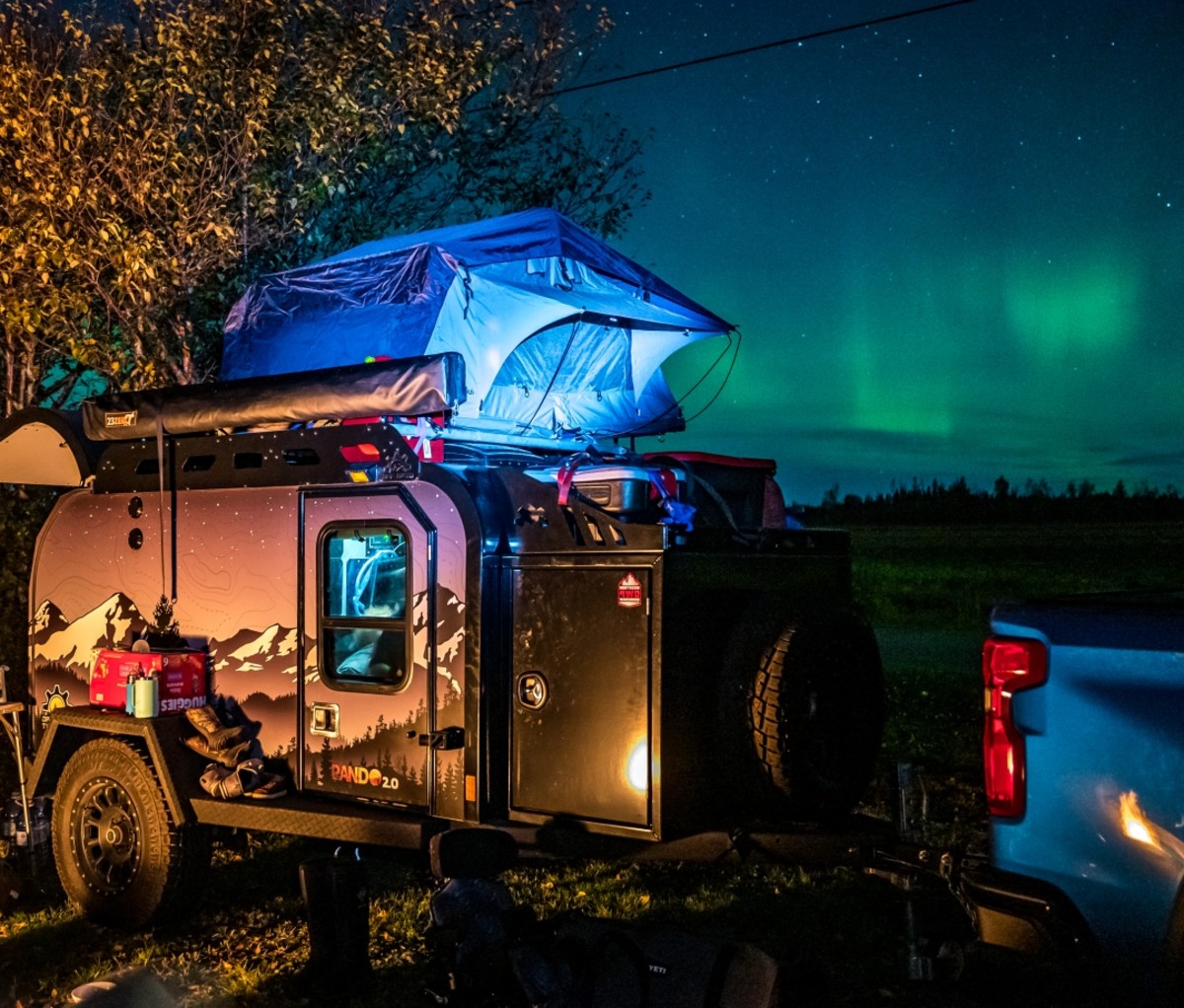
What to Do When You Reach the End of the Trans-Labrador Highway
On completion of the highway, there are essentially three options. You can turn around and go back the way you came. You can take a 30-hour ferry sailing along Québec’s Lower North Shore to Kegashka, where Québec Highway 138 ends, and then drive from there to Baie Comeau, where you started. Or you can do what we did, which is head over to the island of Newfoundland’s northern reaches by crossing the Strait of Belle Isle on a ferry. Once there, we continued our journey down the island’s Northern Peninsula where we enjoyed more adventures before jumping over to Nova Scotia via another ferry which departs from Port aux Basques.
Needless to say, it was quite the trip. I was amazed with how well the kids did out there and we all learned a lot along the way. In all, it easily stands out as my favorite adventure of this type: the cultural elements, the ocean views, the wildness of the place, and the fact that we chose not to rush really made the trip special. It’s no secret that this type of adventure travel requires a lot of planning and expense (particularly when you have kids along), but it didn’t take long before the experiences of the journey began to sink in. That’s the point when all the challenges that go into making a trip like this a reality melt away—and you get to really enjoy it.
from Men's Journal https://ift.tt/MtfYx72





No comments:
Post a Comment